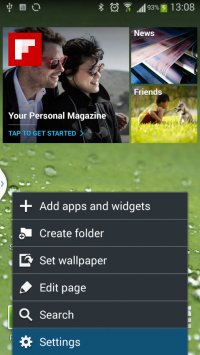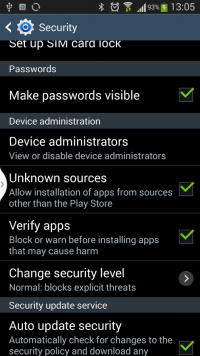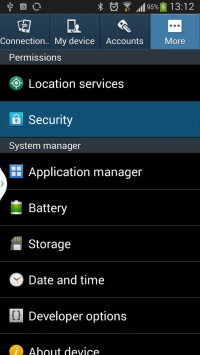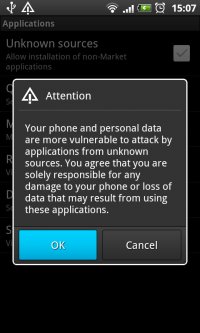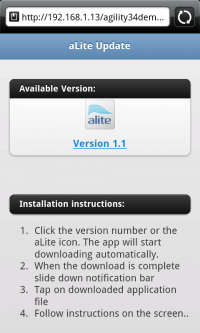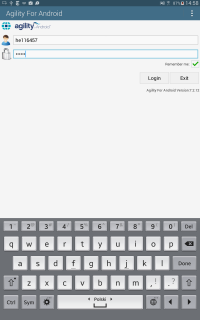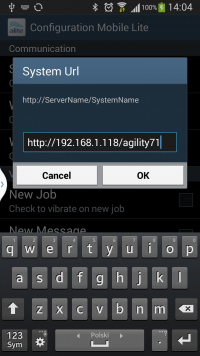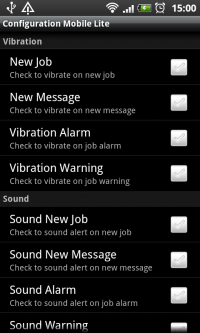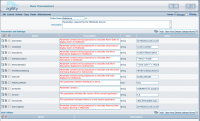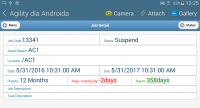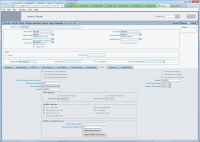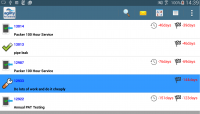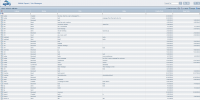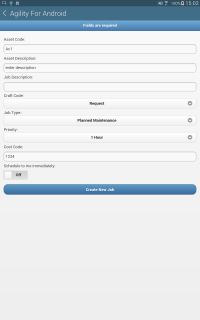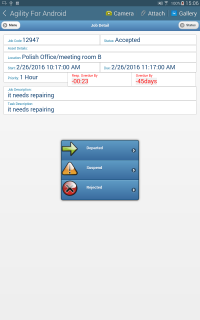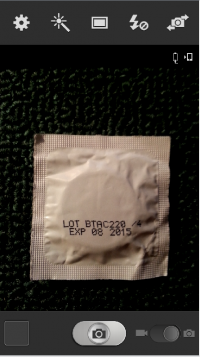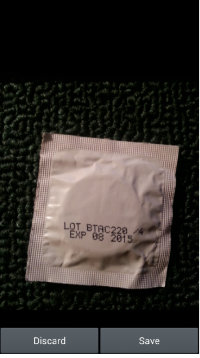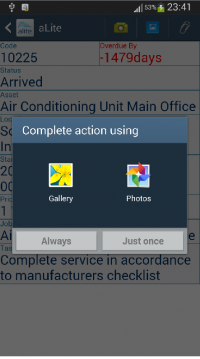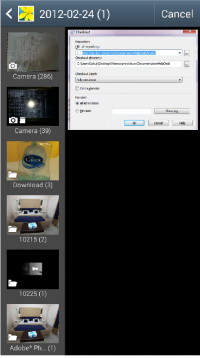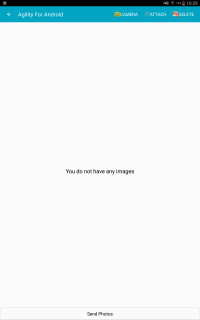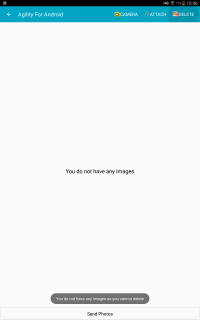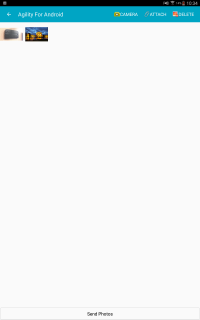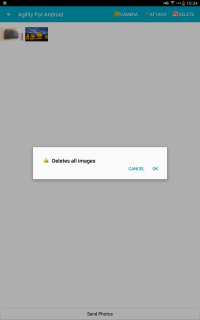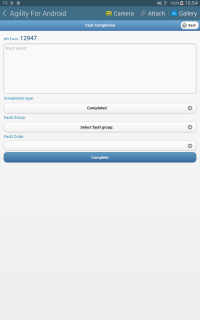Difference between revisions of "Agility for Android"
(→{{anchor|Toc390862459}} Using Agility for Android) |
(→{{anchor|Toc390862459}} Using Agility for Android) |
||
| Line 240: | Line 240: | ||
Agility for Android is represented in a set of installed applications by the icon: | Agility for Android is represented in a set of installed applications by the icon: | ||
| − | <div style="text-align:center;">[[Image:Android aLiteIcon.png| | + | <div style="text-align:center;">[[Image:Android aLiteIcon.png|100px|center]]</div> |
Once the icon is tapped, Agility for Android login screen will be presented. | Once the icon is tapped, Agility for Android login screen will be presented. | ||
Revision as of 12:22, 12 April 2016
Contents
Installing Agility for Android
Prerequisites and Installation
Android device requirements
- Supported android versions: 4.2 and above. Agility for Android works on much wider range of android versions, but at the moment supported are only versions mentioned above.
- Minimum screen resolution is HVGA (320x480 pixels), recommended resolution is WVGA (480x800 pixels)
- Minimum: 128MB RAM memory and 20MB of free storage.
- Agility for Android will work with any IP network connection (regardless of Physical Layer: GPRS, 3G, WIFI).
Preparing Android device
2.In the settings menu Tabs select “More…” and select “Security
4.In the message box, select OK.
Download and Installation
- Click the version number or the aLite icon. The app will start downloading automatically.
- When the download is complete slide down notification bar.
- Tap on downloaded application file.
- Follow instructions on the screen.
Configuration
Agility Configuration
Agility configuration file
<GeneralWebService
enabled="true"
.
.
.
/>
System parameters controlling Agility for Android
To enable Agility for Android functionality in Agility appropriate system parameter must be set. Go to System Configuration -> System Parameters. Open MobileLite folder and set MobileLiteMode value to true.
Other parameters allows customization of data presented on android from agility. System parameters allow also to control global upgrade of Agility for Android application on android devices (please refer Licensing And Software Update document for details).
System parameters for Agility for Android description:
- WarningDate
This parameter is used to turn countdown clock into warning state. Countdown timer color will turn orange if current time reach WarningDate.
- Alarm date
This parameter is used to turn countdown into alarm state. Countdown timer color will turn red if current time reach AlarmDate.
- Clock date
This parameter is used to control calculation of remaining time. In other words button in Agility for Android displays: NOW – ClockDate where NOW denotes current date and time.
- HtmlListDetails
- MobileLiteMode
- SortOrder
Set up labour for use with Agility for Android
The labour resource using Agility for Android software on the mobile device has to be configured as Mobile Lite user. Additionally, labour has to be paired with agility user profile. Once this is done, user should be able to login from mobile device (using agility user credentials).
Update Parameters
1. If export-import definitions need to be updated on the mobile device, “Update Mobile Parameters” button can be used to force definitions sending.Using Agility for Android
Agility for Android is represented in a set of installed applications by the icon:
Once the icon is tapped, Agility for Android login screen will be presented.
Login screen
The screen below shows the layout of the Agility for Android login screen. Top text field is provided to enter Agility login name, the text field below should contain user’s password. Remember me option has been provided to allow storing user credentials to be prepopulated when the user logs into the application next time:
Jobs List
After successful login, Jobs list screen is presented to the user:
The icon on the left hand side of the job description, identifies current job status. It may be one of the following:
 - New job has arrived and it has not been accepted yet
- New job has arrived and it has not been accepted yet
 - Job has been accepted by the mobile device user
- Job has been accepted by the mobile device user
 - Mobile device user has departed to do the job
- Mobile device user has departed to do the job
 - Mobile device user has arrived on site to do the job
- Mobile device user has arrived on site to do the job
On the right of the icon, there is a job description which includes full job classification and additional information entered when the job was created.
On the top right corner, the figure is displayed representing time remaining until the job becomes overdue.
Tapping the description of the particular job will cause a detail screen for that job to be displayed. The layout and functionality of the details form is described in Job details section.
Form menu is located on the top-right corner of the form. Once the form menu icon is tapped, following options are displayed:
- Messages – directs to Messages forms, where message can be sent to Agility back office system, which are available for review using Labour resources -> Expert Messages form:
- Sort – allows to sort jobs list by start date, due date or select default sorting which can be configured by the Agility back office system
- New Job – directs the system to the “New Job” form, which has been provided to support raising new AGV requests. The form is described in the next paragraph.
New Job
//TODO: change new AGV job to standard new job
Rules for data population are exactly as described for Agility system, described in AGV Request Release Notes document.
Once Submit Request button is tapped, new job request is created as shown on the right hand side screenshot above. Add New button can be used to create another AGV request. Using Back button on the device, the form might be closed to go back to Job List form.
Job details
This form is displayed when particular job is tapped on the job list screen.
The screen is divided in to sections, where related information is displayed:
- Code – Job Code
- Due In/Overdue by – depending on the condition of the job being overdue or not, it displays the time remaining until the job becomes overdue or the time by which the job is already overdue.
- Status – current status of the job
- Location – placed below status information it summarises information about Dept/Ward, Room Number and the Asset against which the job has been raised.
- Section with key date information (Start/Latest Start/Due)
- Priority information
- Additional comments about the job
- Specific information regarding the task within the job
- Contact details of the person responsible for the job
Job Status updates
Job status updates are performed on the details screen and are accessible using device’s menu button. After the button is pressed, the option to move the job to the next status will be displayed:
Only statuses, which are available to be accessed from the current status will be shown in the menu options displayed. In the example above, the job is currently suspended, so there are 2 statuses available – Departed or Arrived
The last status in the flow is Completed status, which causes Job completion form to be displayed. Details of the form completion are described in the Job Completion section
Create/Attach Photo - Gallery
Create Photo
Once the job is completed, all photos done against the job will be transferred to back office and linked as job attachments.
Attach Photo
1. If you want attach photo for current job you should click icon “Attach” on form.
Gallery
1. If you want see gallery for current job you should click icon “Gallery” on form
Job Completion
Separate form has been provided to gather all the information required during job completion process. Related information has been grouped in sections so the screen design is clearer for the user. Each section is separately explained below.
Job completion screen appears on the device once the status Completed is selected on the menu on the detail form. Once this option is selected, screen like on the right hand side below will be shown:
* Completion code: drop-down allowing to select appropriate completion code (fault code) for the job- Response Failure Reason: when the job is overdue in relation to response KPI, this field will be presented to the user to specify the reason of KPI failure.
- Rectification Failure Reason: when the job is overdue in relation to rectification KPI, this field will be presented to the user to specify the reason of KPI failure.
- Additional information: depending on the job type and other factors, various additional attributes will be presented to be populated together with the job completion. The rules of the attributes set displayed are exactly the same as the rules used in the standard Agility job completion screen.
